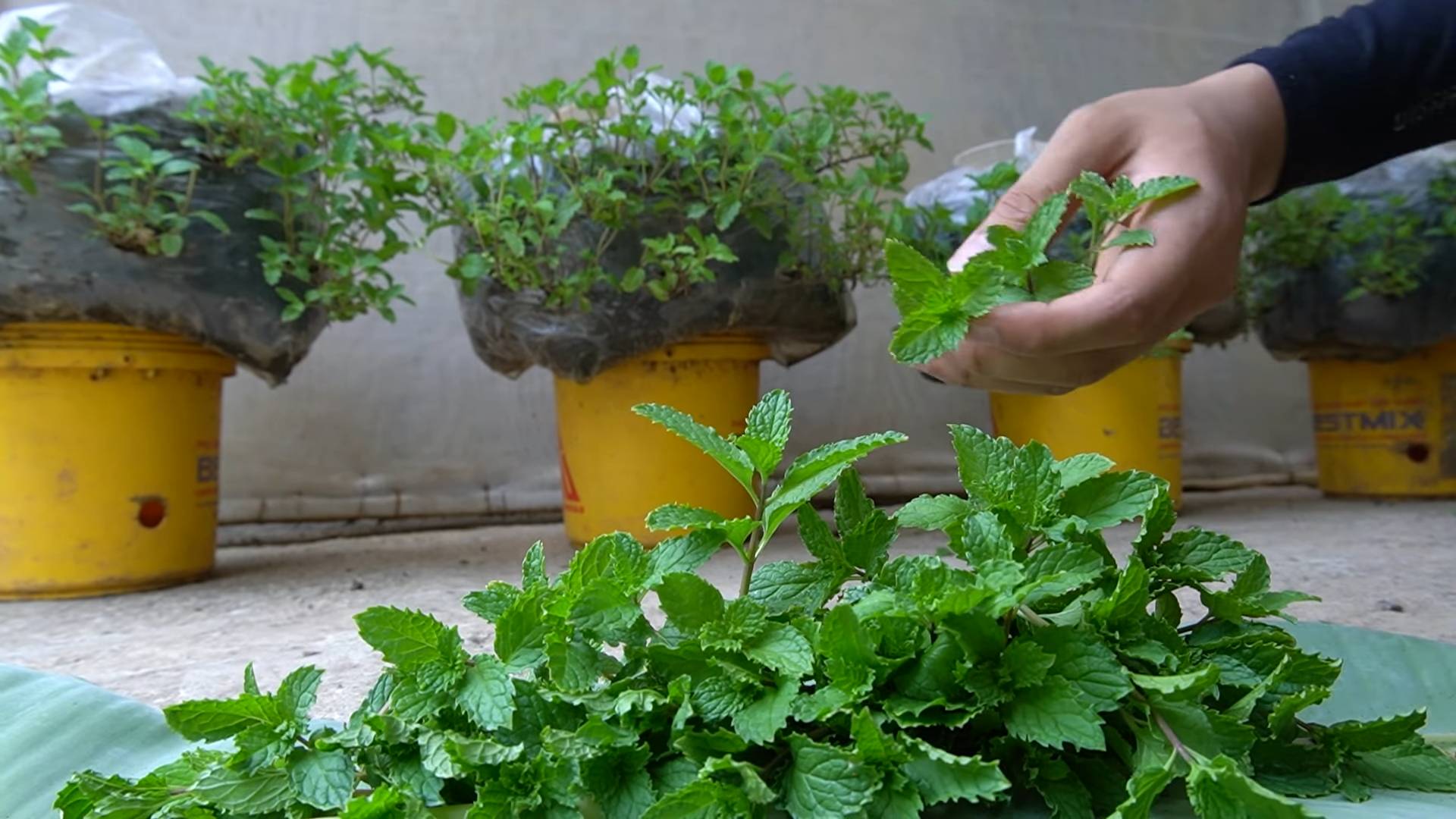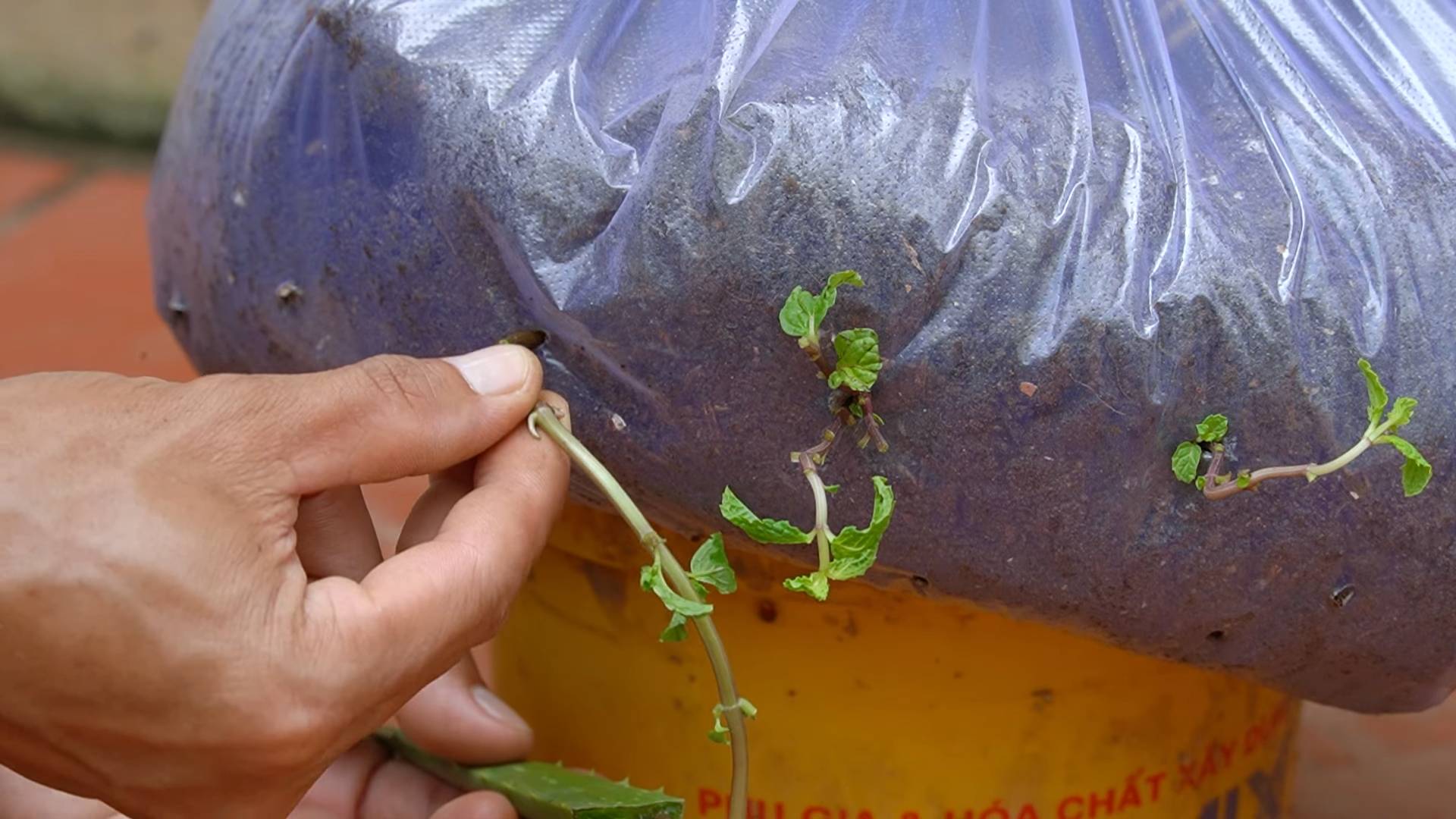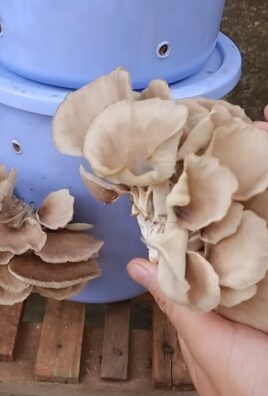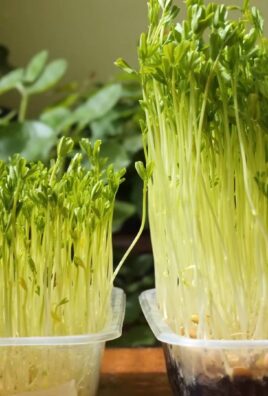High Yield Vegetables to Grow – that’s what every gardener dreams of, right? Imagine baskets overflowing with juicy tomatoes, crisp cucumbers, and vibrant peppers, all from your own backyard! Forget those tiny, disappointing harvests. We’re diving deep into the secrets of maximizing your vegetable garden’s potential, and I’m so excited to share these tips with you.
For centuries, cultivating bountiful gardens has been a cornerstone of self-sufficiency and a connection to the earth. From the ancient Egyptians who relied on the Nile’s fertile banks to the victory gardens of World War II, growing your own food has always been a powerful act. But let’s face it, not everyone has acres of land or endless hours to dedicate to gardening. That’s where these DIY tricks and hacks come in!
In today’s world, where grocery prices are soaring and concerns about food security are growing, learning how to cultivate high yield vegetables to grow is more important than ever. These aren’t just gardening tips; they’re strategies to help you get the most bang for your buck (or rather, your seed!). Whether you’re a seasoned gardener or just starting out, these simple yet effective techniques will transform your garden into a thriving, productive oasis. Get ready to roll up your sleeves and discover the secrets to a truly abundant harvest!

High-Yield Vegetables to Grow: A Beginner’s Guide to Bountiful Harvests
Hey there, fellow gardening enthusiasts! Are you dreaming of a garden overflowing with fresh, delicious vegetables? I know I am! Growing your own food is incredibly rewarding, and choosing the right varieties can make all the difference between a modest harvest and a truly abundant one. So, let’s dive into some high-yield vegetables that are perfect for both beginner and experienced gardeners alike. I’ll walk you through each one, giving you tips and tricks to maximize your harvest.
Tomatoes: The King of the High-Yield Garden
Tomatoes are a garden staple for a reason! They’re versatile, delicious, and with the right varieties, incredibly productive.
Why Tomatoes are High-Yield:
* Determinate vs. Indeterminate: Indeterminate varieties continue to grow and produce fruit throughout the season, offering a much larger yield than determinate (bush) varieties.
* Hybrid Vigor: Hybrid tomatoes are often bred for disease resistance and increased productivity.
* Proper Support: Staking or caging tomatoes allows for better airflow and prevents fruit from rotting on the ground, leading to a healthier and more productive plant.
Recommended High-Yield Tomato Varieties:
* ‘Sungold’: These cherry tomatoes are incredibly sweet and prolific. I’ve had Sungold plants that produced hundreds of tomatoes!
* ‘Super Sweet 100’: Another excellent cherry tomato variety known for its high yields and disease resistance.
* ‘Big Beef’: A classic beefsteak tomato that produces large, flavorful fruits in abundance.
* ‘Roma’: Perfect for sauces and canning, Roma tomatoes are determinate but still offer a good yield.
* ‘San Marzano’: Another paste tomato ideal for sauces, known for its rich flavor and high productivity.
How to Grow Tomatoes for Maximum Yield:
1. Start Seeds Indoors (Optional): I usually start my tomato seeds indoors about 6-8 weeks before the last expected frost. This gives them a head start.
* Use a seed-starting mix and sow seeds about ¼ inch deep.
* Keep the soil moist and warm (around 70-75°F).
* Once seedlings have their first true leaves, transplant them into larger pots.
2. Harden Off Seedlings: Before transplanting outdoors, gradually acclimate your seedlings to outdoor conditions over a week or two. This prevents transplant shock.
* Start by placing them in a sheltered spot for an hour or two each day, gradually increasing the time and exposure to sunlight.
3. Prepare the Soil: Tomatoes need well-drained soil that is rich in organic matter.
* Amend the soil with compost or well-rotted manure before planting.
* Ensure the soil pH is between 6.0 and 6.8.
4. Planting: Choose a sunny location that receives at least 6-8 hours of sunlight per day.
* Space plants according to the variety’s mature size (usually 2-3 feet apart).
* Bury the stem deeply when planting, as tomatoes can grow roots along the buried stem, leading to a stronger plant.
5. Support: Stake, cage, or trellis your tomato plants to keep them off the ground and improve airflow. I prefer using sturdy tomato cages.
* Install the support system at the time of planting to avoid disturbing the roots later.
6. Watering: Water deeply and regularly, especially during hot, dry weather. Aim for about 1-2 inches of water per week.
* Water at the base of the plant to avoid wetting the foliage, which can lead to disease.
7. Fertilizing: Feed your tomato plants with a balanced fertilizer every few weeks.
* Look for a fertilizer that is specifically formulated for tomatoes.
8. Pruning: Prune suckers (the shoots that grow between the main stem and branches) on indeterminate varieties to encourage fruit production.
* Pinch off suckers when they are small to avoid stressing the plant.
9. Pest and Disease Control: Monitor your plants regularly for pests and diseases.
* Use organic pest control methods, such as insecticidal soap or neem oil, if necessary.
* Remove any diseased leaves or plants promptly to prevent the spread of disease.
10. Harvesting: Harvest tomatoes when they are fully colored and slightly soft to the touch.
* Gently twist the fruit from the vine.
Zucchini: The Prolific Summer Squash
Zucchini is notorious for its abundance! One or two plants can easily provide enough zucchini for your family and neighbors.
Why Zucchini is High-Yield:
* Rapid Growth: Zucchini plants grow quickly and begin producing fruit within a few weeks of planting.
* Continuous Production: They continue to produce fruit throughout the summer, as long as you keep harvesting.
* Large Fruit Size: Each zucchini can grow quite large, providing a substantial amount of food.
Recommended High-Yield Zucchini Varieties:
* ‘Black Beauty’: A classic dark green zucchini that is known for its high yields and disease resistance.
* ‘Costata Romanesco’: An Italian heirloom variety with ribbed fruit and a nutty flavor.
* ‘Gold Rush’: A yellow zucchini that is equally productive and flavorful.
* ‘Eight Ball’: A round zucchini that is perfect for stuffing.
How to Grow Zucchini for Maximum Yield:
1. Direct Sow Seeds: Zucchini is best direct sown in the garden after the last frost.
* Plant seeds about 1 inch deep and 2-3 feet apart.
2. Prepare the Soil: Zucchini needs well-drained soil that is rich in organic matter.
* Amend the soil with compost or well-rotted manure before planting.
3. Sunlight: Choose a sunny location that receives at least 6-8 hours of sunlight per day.
4. Watering: Water deeply and regularly, especially during hot, dry weather. Aim for about 1-2 inches of water per week.
* Water at the base of the plant to avoid wetting the foliage, which can lead to disease.
5. Fertilizing: Feed your zucchini plants with a balanced fertilizer every few weeks.
6. Harvesting: Harvest zucchini when they are young and tender, about 6-8 inches long.
* Use a sharp knife to cut the fruit from the vine.
* Regular harvesting encourages the plant to produce more fruit.
7. Pest and Disease Control: Watch out for squash vine borers and powdery mildew.
* Use row covers to protect young plants from squash vine borers.
* Ensure good air circulation to prevent powdery mildew.
Peppers: Sweet and Spicy Abundance
Peppers are another fantastic choice for a high-yield garden. Whether you prefer sweet bell peppers or fiery hot peppers, there’s a variety for everyone.
Why Peppers are High-Yield:
* Continuous Production: Pepper plants continue to produce fruit throughout the season, as long as you keep harvesting.
* Multiple Fruits per Plant: Each plant can produce a significant number of peppers.
* Variety of Flavors and Heat Levels: Choose varieties that suit your taste preferences.
Recommended High-Yield Pepper Varieties:
* ‘California Wonder’: A classic bell pepper that is known for its high yields and disease resistance.
* ‘Sweet Banana’: A sweet pepper that is perfect for frying or pickling.
* ‘Jalapeño’: A moderately hot pepper that is versatile and productive.
* ‘Serrano’: A hotter pepper that is great for adding spice to your dishes.
* ‘Habanero’: A very hot pepper that should be handled with care.
How to Grow Peppers for Maximum Yield:
1. Start Seeds Indoors (Recommended): I recommend starting pepper seeds indoors about 8-10 weeks before the last expected frost.
* Peppers need a long growing season, so starting them indoors gives them a head start.
* Use a seed-starting mix and sow seeds about ¼ inch deep.
* Keep the soil moist and warm (around 75-80°F).
* Once seedlings have their first true leaves, transplant them into larger pots.
2. Harden Off Seedlings: Before transplanting outdoors, gradually acclimate your seedlings to outdoor conditions over a week or two.
3. Prepare the Soil: Peppers need well-drained soil that is rich in organic matter.
* Amend the soil with compost or well-rotted manure before planting.
* Ensure the soil pH is between 6.0 and 6.8.
4.

Conclusion
So, there you have it! Unlocking the secrets to a bountiful harvest doesn’t require acres of land or a green thumb blessed by the gardening gods. By strategically selecting and cultivating these high yield vegetables, you can transform even the smallest garden plot, balcony, or patio into a thriving source of fresh, delicious produce.
The beauty of this approach lies not only in the sheer volume of vegetables you’ll reap but also in the satisfaction of knowing you’ve maximized your space and effort. Imagine the joy of harvesting baskets overflowing with juicy tomatoes, crisp cucumbers, and vibrant peppers, all grown with your own hands. Think of the money you’ll save at the grocery store, and the peace of mind that comes with knowing exactly where your food is coming from.
But the benefits extend beyond mere practicality. Gardening, in general, is a fantastic stress reliever, a way to connect with nature, and a rewarding hobby that can be enjoyed by people of all ages and skill levels. And when you focus on high-yield varieties, you amplify those benefits, creating a garden that is both productive and fulfilling.
Don’t be afraid to experiment! While we’ve highlighted some of the top performers, there are countless variations and cultivars within each vegetable family. Try different tomato varieties – perhaps a Roma for sauces, a cherry tomato for snacking, and a beefsteak for slicing. Explore different pepper colors and heat levels. Consider adding companion plants to your garden to further boost yields and deter pests. Basil, for example, is a great companion for tomatoes, while marigolds can help repel nematodes.
Remember, success in gardening is a journey, not a destination. There will be challenges along the way – pests, diseases, unpredictable weather – but don’t let them discourage you. Each season is a learning opportunity, a chance to refine your techniques and discover what works best in your particular environment.
We encourage you to embrace the challenge and embark on your own high-yield vegetable gardening adventure. Start small, perhaps with just a few containers or a raised bed. Choose the vegetables that you and your family enjoy the most. And most importantly, have fun!
We’re confident that you’ll be amazed by the results. And we’d love to hear about your experiences! Share your tips, tricks, and triumphs in the comments below. Let’s create a community of high-yield vegetable gardeners, sharing our knowledge and inspiring each other to grow the most abundant and delicious gardens possible. What are you waiting for? Get planting!
Frequently Asked Questions (FAQ)
What exactly does “high yield” mean in the context of vegetables?
High yield, in gardening terms, refers to vegetable varieties that are known to produce a significantly larger quantity of produce per plant, per square foot, or per unit of time compared to other varieties of the same vegetable. This can be due to factors like the plant’s growth habit, its resistance to diseases and pests, its ability to tolerate different environmental conditions, and its overall productivity. Choosing high-yield varieties is a smart strategy for maximizing your harvest, especially if you have limited space or time. It’s about getting the most bang for your buck, or in this case, the most vegetables for your effort.
Are high-yield vegetables more difficult to grow than other varieties?
Not necessarily. In many cases, high-yield vegetables are actually easier to grow because they are often bred for disease resistance and vigor. However, it’s important to research the specific needs of each variety you choose. Some high-yield vegetables may require more support (like staking tomatoes), more frequent watering, or more fertilization to support their heavy fruit production. The key is to provide them with the right conditions and care, just as you would with any other vegetable. Don’t assume that because they are high-yield, they will thrive on neglect. Proper planning and attention are still essential for success.
What are some common mistakes to avoid when growing high-yield vegetables?
Several common mistakes can hinder your success with high-yield vegetables. One is overcrowding. Even though you want to maximize your space, giving each plant enough room to grow is crucial. Overcrowding can lead to poor air circulation, increased risk of disease, and reduced yields. Another mistake is neglecting soil health. High-yield vegetables need nutrient-rich soil to support their heavy production. Amend your soil with compost and other organic matter before planting, and consider using a balanced fertilizer throughout the growing season. Insufficient watering is another common pitfall. High-yield vegetables need consistent moisture, especially during fruiting. Monitor your soil moisture levels and water deeply and regularly. Finally, failing to provide adequate support for vining or sprawling plants like tomatoes and cucumbers can lead to broken stems and reduced yields. Use stakes, cages, or trellises to support your plants and keep them off the ground.
Can I grow high-yield vegetables in containers?
Absolutely! Many high-yield vegetables are well-suited for container gardening. Tomatoes, peppers, cucumbers, and bush beans are all excellent choices for containers. When growing high-yield vegetables in containers, it’s important to choose the right size container. Larger containers are generally better, as they provide more room for root growth and help retain moisture. Use a high-quality potting mix that drains well, and be sure to fertilize regularly, as nutrients can leach out of containers more quickly than in the ground. Also, pay close attention to watering, as containers tend to dry out faster than garden beds. With a little extra care, you can enjoy a bountiful harvest of high-yield vegetables even if you only have a small balcony or patio.
How do I choose the best high-yield vegetable varieties for my climate?
Selecting the right varieties for your climate is crucial for success. Pay attention to the “days to maturity” listed on seed packets or plant tags. Choose varieties that will have enough time to mature before the first frost in your area. Consider your region’s average temperatures, rainfall, and sunlight hours. Some vegetables thrive in hot, sunny climates, while others prefer cooler, shadier conditions. Consult with local nurseries or gardening experts for recommendations on varieties that perform well in your specific area. You can also check with your local agricultural extension office for information on regional gardening practices and recommended varieties. Don’t be afraid to experiment with different varieties to see what works best in your garden.
What are some good companion plants to grow with high-yield vegetables to improve yields and deter pests?
Companion planting can be a powerful tool for boosting yields and deterring pests naturally. Basil is a classic companion for tomatoes, as it repels pests and is said to improve the flavor of the tomatoes. Marigolds are another excellent choice for deterring nematodes and other soil pests. Nasturtiums can attract aphids away from your vegetables, acting as a trap crop. Beans and other legumes can fix nitrogen in the soil, benefiting nitrogen-hungry vegetables like corn and tomatoes. Carrots and onions can deter carrot root flies and onion flies, respectively. Experiment with different combinations of companion plants to find what works best in your garden.
How can I ensure my high-yield vegetables get enough nutrients?
Ensuring adequate nutrient supply is vital for maximizing the yield of your vegetables. Start with healthy, well-drained soil amended with plenty of compost and other organic matter. Conduct a soil test to determine the nutrient levels in your soil and identify any deficiencies. Based on the results of the soil test, amend your soil with appropriate fertilizers. Use a balanced fertilizer that contains nitrogen, phosphorus, and potassium, as well as micronutrients like iron, zinc, and manganese. Side-dress your plants with fertilizer throughout the growing season, following the instructions on the fertilizer package. Consider using organic fertilizers like compost tea or fish emulsion, which provide a slow-release source of nutrients. Monitor your plants for signs of nutrient deficiencies, such as yellowing leaves or stunted growth, and adjust your fertilization accordingly.
Where can I find reliable information about growing high-yield vegetables?
There are many excellent resources available to help you learn more about growing high-yield vegetables. Your local agricultural extension office is a great place to start. They offer a wealth of information on regional gardening practices, recommended varieties, and pest and disease management. Local nurseries and garden centers can also provide valuable advice and recommendations. Look for reputable gardening websites and blogs that offer evidence-based information and practical tips. Books on vegetable gardening can also be a great source of knowledge. Be sure to choose books written by experienced gardeners or horticultural experts. Finally, don’t be afraid to connect with other gardeners in your community. Join a local gardening club or online forum to share tips, ask questions, and learn from each other’s experiences.





Leave a Comment